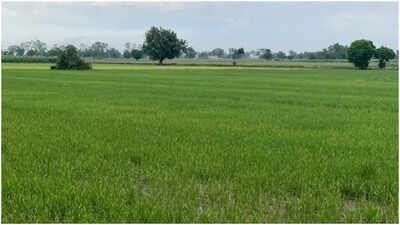ARTICLE AD BOX

BATHINDA: The smallholder farmers, who produce half of world’ food calories, need US$443 billion a year to meet the climate adaptation costs, reveals new analysis published on Thursday ahead of the COP30 Climate Summit where adaptation will be the centre stage.
The research was conducted by Climate Focus for the Family Farmers for Climate Action - a new global alliance representing 95 million small-scale producers across Africa, Latin America, Asia and the Pacific. It shows smallholders with 10 hectares of land or less requires US$443 billion a year to build resilience and adapt to climate impacts - equivalent to an annual average investment of US$952 for one hectare farm or $2.19 a day.
This is less than $470 billion a year which the UN estimates COP 30 spent on agriculture subsidies that are harmful to people and the planet, and a third of the US$1.4 trillion developing countries spent on debt servicing in 2023. Global spending on smallholder adaptation amounted to US$1.59 billion in 2021 or just 0.36% of what’s needed. On average smallholders spend 20 - 40% of their annual income on adaptive measures - totaling US$368 billion a year.
Elizabeth Nsimadala, President of the Eastern Africa Farmers Federation (EAFF) which represents 25 million smallholders said: “This isn’t charity - it's an investment in the food security of people right around the globe. Smallholders produce half the world’s food calories, support 2.5 billion livelihoods, and are central to global supply chains of commodities such as rice, wheat, cocoa and coffee. Investing in smallholder adaptation benefits us all.
” Thales Mendonça, agroforestry farmer from Southern Brazil and a representative of the Inter-Continental Network of Organic Farmer Organisations added: "Investing in smallholders is not only an economic necessity — it’s an ecological imperative. We are pioneering practices such as agroecology that build climate resilience by restoring nature's safety net. Supporting smallholders and our organisations to scale up this work is the fastest route from scarcity to abundance.
” Adaptation is high on the agenda at COP30. Agreement is expected on the indicators that will track progress on the global goal on adaptation and shape national adaptation plans - however the current list does not include specific indicators on finance flows to smallholders. Questions also remain over funding for the goal. It's still not clear if developed nations will deliver on their promise to double adaptation finance to US$38-40 billion by 2025 or agree on a target to replace it.
Meanwhile the Brazilian Presidency’s Action Agenda aims to mobilise finance and political momentum for sustainable resilient agriculture such as agroecology and bring the voices of family farmers into discussions on finance, loss and damage, and the just transition via the Circle of Peoples. Esther Penunia, Secretary-General of the Asian Farmers’ Association (AFA) which represents 12 millions smallholders said: “Governments must agree to a major boost in adaptation finance to protect our farms from the storms, drought, and heatwaves that are wreaking havoc across the globe.
Getting more finance to smallholders through their organisations will have the greatest impact. To achieve this governments and funders must make it easier for family farmer organisations to directly access finance, and back the creation of a new dedicated Farmers Resiliency Fund - led by family farmers’ organisations.
” Intercontinental Network of Organic Farmer Organisations (INOFO) President Shamika Mone said there are smallholder farmers from India belonging to Asian farmers association (AFA) and INOFO are part of the Family Farmers For Climate Action (FFCA) campaign.

 3 hours ago
5
3 hours ago
5









 English (US) ·
English (US) ·